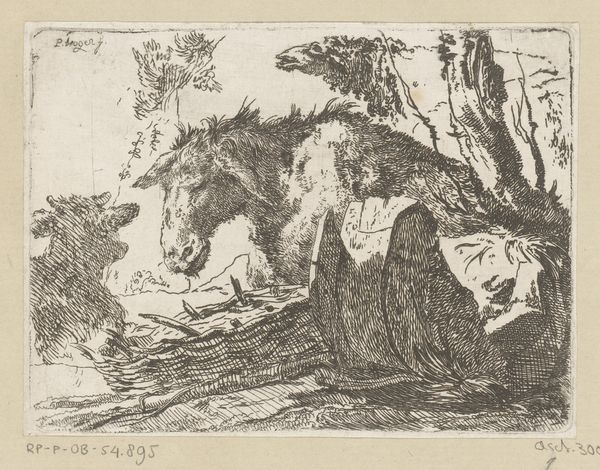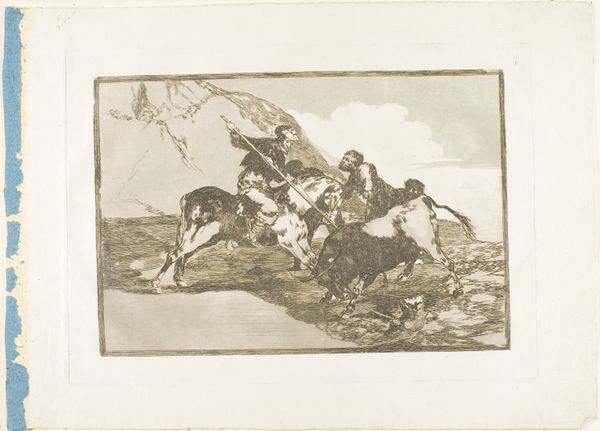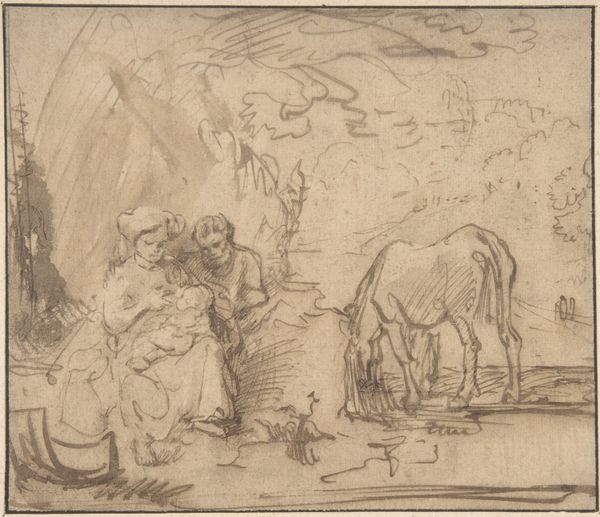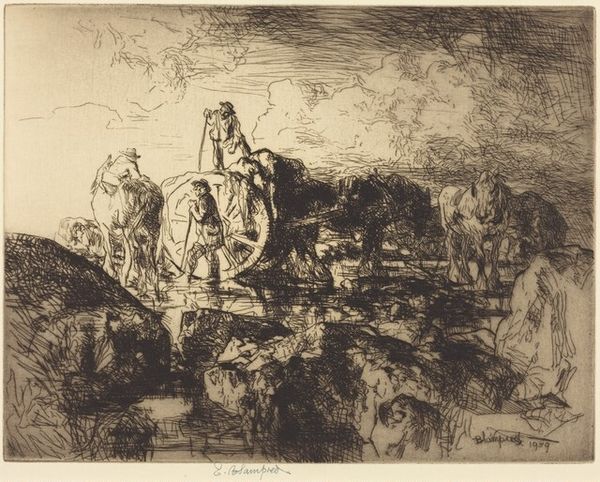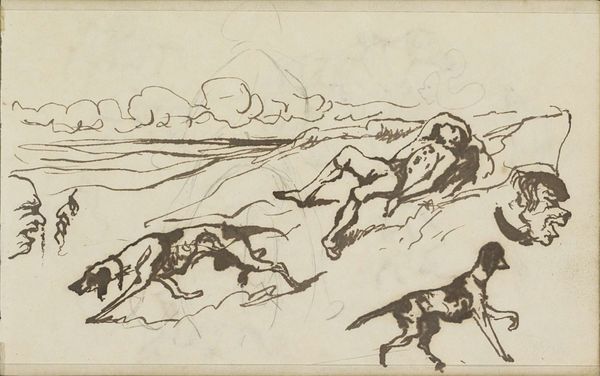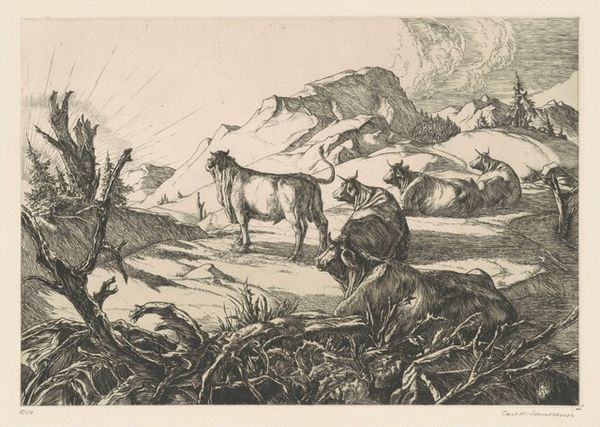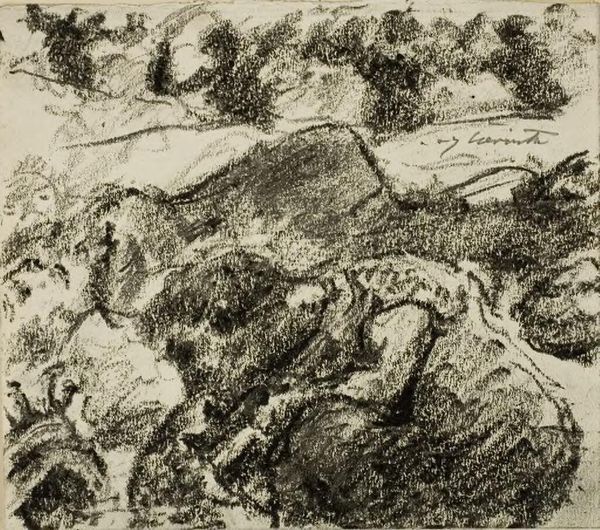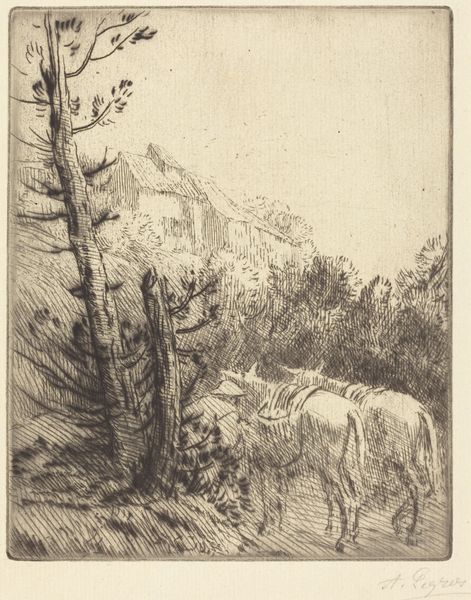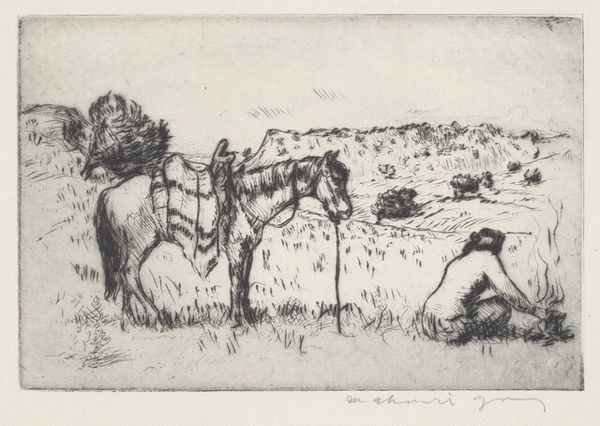
drawing, print, etching
#
drawing
#
ink drawing
# print
#
etching
#
landscape
#
figuration
Copyright: National Gallery of Art: CC0 1.0
Curator: This print, titled "Splashing Horses," is an etching and ink drawing by Philip Reisman. The image depicts horses and figures interacting in a river landscape. Editor: It has a vibrant, almost chaotic energy, doesn’t it? The textures feel incredibly rich, created through this intricate network of lines. The density around the figures versus the negative space in the sky gives the entire image such dynamism. Curator: Indeed, that dynamism speaks volumes. Given Reisman’s background, we can read this piece through the lens of social realism, particularly as it emerged in the United States. The working class often found themselves confined to grueling conditions and a similar “struggle” to make ends meet. Here we see men laboring with the animals within this rough landscape, which in itself represents a place where there is very little respite from daily struggle. Editor: That's a powerful reading. From a formal standpoint, it's fascinating to consider how Reisman uses the etching technique. The lines create not just texture, as I said, but also this real sense of movement. Notice the way the lines are more tightly packed around the central figures. The composition, structured yet appearing spontaneous, allows the viewers' eyes to move constantly, creating a very active image. Curator: And consider that "activity" in light of early 20th-century anxieties around the rise of industrialization, globalization, urbanization and displacement. The river scene might, then, operate as an active critique or a symbol of a more elemental connection. Also of the changing status and representation of human/animal interactions throughout the time. These observations make me wonder if the horses carry any socio-political resonance here. Editor: Interesting perspective! The stark contrasts in tone, the way the ink both defines and obscures the figures, all contribute to the sense of constant motion and fluidity of life. As we come to appreciate the intentional design of the work, perhaps it’s about an acknowledgement of transience and that what's here today could disappear or evolve in shape. Curator: Absolutely, it invites a deeper reflection on these thematic qualities that continue to shape our modern conditions and existence today. Editor: It gives us so much to consider from a visual and intellectual standpoint.
Comments
No comments
Be the first to comment and join the conversation on the ultimate creative platform.
